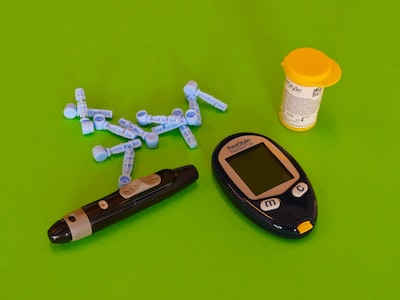
Type 2 Diabetes: Understanding the Modern-Day Epidemic
BioCertica Content TeamType 2 diabetes is a pervasive condition influencing the body's ability to manage blood glucose levels efficiently. This form of diabetes, which is the most widespread globally, emerges from a complex interplay of lifestyle choices and genetic predispositions.
Research has elucidated that insulin resistance marks a core problem in type 2 diabetes, making it difficult for cells to utilize insulin effectively. Insulin, a crucial hormone for blood sugar regulation, when not properly used by the body, leads to the pancreas being overburdened. This scenario results in elevated glucose levels in the bloodstream over time.
Symptoms often associated with type 2 diabetes, as noted by health experts, include an increased need to urinate, an unquenchable thirst, constant hunger, unexpected weight loss, fatigue, blurry vision, and wounds that heal slowly. It's worth mentioning that in its initial stages, the disease might not manifest any noticeable symptoms.
Addressing type 2 diabetes typically entails a multifaceted approach focusing on lifestyle adjustments. Embracing a balanced diet, engaging in regular physical activities, and achieving a healthy weight are fundamental steps. For cases where these measures do not suffice in managing blood glucose levels, healthcare providers may recommend medications like metformin, sulfonylureas, or DPP-4 inhibitors.
Prevention plays a critical role in combating type 2 diabetes. Incorporating regular exercise, adhering to a nutritious diet, maintaining an optimal weight, and undergoing frequent health check-ups can dramatically diminish the risk of developing this condition.
With diligent management, individuals diagnosed with type 2 diabetes can enjoy a high quality of life. Nonetheless, it's imperative to acknowledge that neglecting proper management can precipitate grave health complications such as heart and kidney diseases, nerve damage, and impaired vision.
The genetic underpinnings of type 2 diabetes, notably the role of DNA, have become a focal point of contemporary medical research. Scientists are delving into how genetic variations influence the risk of developing type 2 diabetes, underscoring the intricate nexus between our genes and the environment in the onset of this condition. Through understanding the genetic factors at play, the medical community aims to pave the way for personalized treatment strategies, offering a beacon of hope for those affected by or at risk of type 2 diabetes.
References:
- American Diabetes Association. (2014). Diagnosis and classification of diabetes mellitus. Diabetes care, 37(Supplement 1), S81-S90.
- Kahn, S. E., Cooper, M. E., & Del Prato, S. (2014). Pathophysiology and treatment of type 2 diabetes: perspectives on the past, present, and future. The Lancet, 383(9922), 1068-1083.
- American Diabetes Association. (2021). 2. Classification and Diagnosis of Diabetes: Standards of Medical Care in Diabetes—2021. Diabetes Care, 44(Supplement 1), S15-S33.
- Knowler, W. C., Barrett-Connor, E., Fowler, S. E., Hamman, R. F., Lachin, J. M., Walker, E. A., & Nathan, D. M. (2002). Reduction in the incidence of type 2 diabetes with lifestyle intervention or metformin. New England Journal of Medicine, 346(6), 393-403.
- American Diabetes Association. (2021). 9. Pharmacologic Approaches to Glycemic Treatment: Standards of Medical Care in Diabetes—2021. Diabetes Care, 44(Supplement 1), S111-S124.
- American Diabetes Association. (2021). 5. Facilitating Behavior Change and Well-being to Improve Health Outcomes: Standards of Medical Care in Diabetes—2021. Diabetes Care, 44(Supplement 1), S53-S72.
- American Diabetes Association. (2021). 10. Cardiovascular Disease and Risk Management: Standards of Medical Care in Diabetes—2021. Diabetes Care, 44(Supplement 1), S125-S150.



